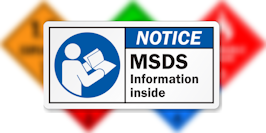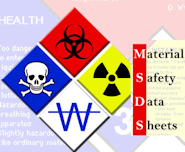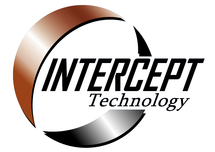All and all, toxic materials have historically been a touchy subject. Ultimately, business-to-business or business-to-consumer, providing customers with products of value is the goal. >However, companies often overlook health and safety concerns. Sadly, this is often done to maximize sales and profits.
Toxic Materials vs. MSDS
Unfortunately, this is something we’ve seen time and again. Some companies jeopardize the well being of their own customers through loopholes or outright negligence.
Intercept Technology™ has always held itself to a high standard of transparency. Inasmuch, in order to promote the health and happiness of our customers, we’d like to enlighten you about federal health regulations.
Here's how a business’s “trade secret” could result in major problems.
OSHA and MSDS

Occupational Safety and Health Administration (OSHA) is an agency of the United States Department of Labor founded in 1971. Its mission statement is as follows:
“to assure safe and healthful working conditions for working men and women by setting and enforcing standards and by providing training, outreach, education and assistance”.

Basically, Material Safety Data Sheets are documents that give detailed information about the nature of a chemical/substance.
Required by OSHA since 1986, these sheets inform employees working with hazardous chemicals. They supply crucial information such as a product’s toxicity, health effects, reactivity, storage and proper disposal.
The primary intention of the MSDS was the assurance of employee safety through transparency and education.
While this all sounds well and good, the OSHA required MSDS had inefficiencies. The main one being a lack of standardization.
Material Safety Data Sheets had no outlined standard format. Consequently, they varied in length and quality and contained no established standard of terminology. As a result, this developed into misleading and/or unclear information.
There was also a clause in the OSHA act that allowed companies to forgo disclosure of hazardous materials in their products. The “trade secret” clause exempted companies from listing proprietary information about their ingredients. This was useful due to the advantages it provided over a company's competitors.
To avoid the listing of specific formulas or compounds, some manufacturers began declaring their chemicals as “trade secrets”. This rendered them clear of disclosure.
Companies were forced to outline an exposure limit to the (unknown) chemicals contained in their products. So long as they could prove their formula as legitimately proprietary, manufacturers didn’t need to let you know what was in their product.
MSDS to SDS
In the early 2000’s, the U.S. Chemical Safety and Hazard Investigation Board became aware of the MSDS major deficiencies. After numerous accidents caused by hazardous materials, the board conducted an investigation and uncovered the vague inaccuracies present in MSDS.
With this came OSHA’s implementation of the Globally Harmonized System of Classification and Labeling of Chemicals or GHS (quite a mouthful, we know). The OSHA and the GHS got rid of the MSDS and created a standard format - the Safety Data Sheet.
Today’s Safety Data Sheets now requires a 16-page length and stricter structure of informational material. It also requires that the information be readily and easily accessible by employees who work with these chemicals.
Step in the Right Direction

It would seem that the problems of employee safety with regards to contact with hazardous materials has been solved. However, there are still ways in which manufacturers and distributors get around the GHS.
The “trade secret” clause is still in effect and recognized by OSHA.This means companies and manufacturers MAY NOT be responsible for listing hazardous chemicals in their products. This can result in serious health hazards.
Also, if a manufacturer can label its item as an article:
“a manufactured item that is formed to a specific shape or design during manufacture”
then it may not need to supply an SDS.It’s important to know what’s in your products and that’s why Intercept™ keeps you informed and safe.
Because our products do not utilize oils, volatile chemicals, or toxic materials, we’ve got nothing to hide! Regardless of the products you choose or the manufacturers you buy from, it’s important to know what chemicals you’re coming into contact with.Stay educated, ahead of the curve and aware of health risks!
